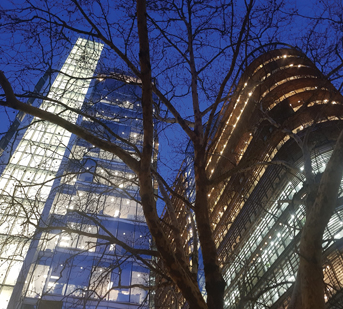Axis Communications has released its latest white paper, Smart Buildings and Smart Cities Security.
It’s authored with Sarb Sembhi of Virtually Informed and James Willison of Unified Security. The paper is the third in a series looking at aspects of security. It reviews the topic, addresses key questions and, importantly, provides recommendations that must be considered if the smart promise is to become a reality. Against the global backdrop of population growth, the strain on limited resources and climate change, there is a growing demand for businesses and governments around the world to deliver significant improvements in the way our cities and the buildings within them are managed. The promise of future cities and buildings built around a smart vision to reduce waste, drive efficiencies and optimise resources is a prodigious one with many inherent challenges, not least, security.
Data at scale
Smart technology enables the collection and analysis of data to create actionable and automated events that will streamline operations. To deliver this at far greater scale means bringing together a large number of very different systems and empowering them to communicate freely with access to important and often sensitive data. Device inter-operability will be a crucial component of its success but to have full confidence in the way that these diverse ecosystems operate together, and to ultimately cede important decision-making to them, stakeholders must be fully confident in the security of the systems. The proliferation of IoT devices has witnessed in parallel an exponential increase in the number of threat exposures and attack vectors, that put in jeopardy the systems that our smart cities and buildings will rely on. With an ever-increasing number of cyber breaches and a common acknowledgment that ‘you are only as strong as your weakest link’, it is important that cyber-security is considered and evaluated throughout the whole supply chain to protect data, maintain privacy and keep risk associated with cyber threats to a minimum. This process should always start by looking at device security and the vendors’ cyber maturity. Managing cybersecurity in environments of this scale involves drawing up thorough risk assessments that go right back through the supply chain. Identifying vulnerabilities and mitigating the potential for damage that they could cause. Topics include:
– Why we need smart cities: Smart cities are increasingly playing a significant role in meeting resource and population challenges;
– Smart and intelligent technology: Smart devices, systems, buildings and cities defined – questions and issues around definitions are addressed;
– Roles and responsibilities: Review stake-holder roles and security risk management to better understand the security issues associated with smart building systems
– Security challenges: Threat vectors are vast and varied with increasing levels of sophistication; understand the vulnerabilities, technologies and standards to be applied;
– Recommendations: Getting started; security standards and frameworks; product strategy, system and solution security; supply and purchasing; and converged operations.
Damage
The associated disruption as a result of a cyber-security breach of a smart system could be catastrophic. At a minimum, it would cause system downtime and impact its ability to operate. The loss of personal data or IP may also damage reputation, impact a company’s share price or even cause actual physical harm. Ensuring that converged security becomes a vital component of this rapidly changing paradigm is of critical importance; safety and security must be at the heart of the shared ambitions for a smarter environment. Steven Kenny, Industry Liaison, Architecture and Engineering at Axis said: “At Axis we are passionate about using technology to help create a smarter and safer world. We also believe that technology should be used in an ethical and responsible way. You might say that this paper reflects the very values of our business in that, used responsibly and with security front and centre, smart technology will help us address the big challenges of our time. Increasing efficiencies is vital in meeting carbon reduction targets and avoiding climate catastrophe. The smart vision provides a strong basis for economic growth and improved quality of life.”










